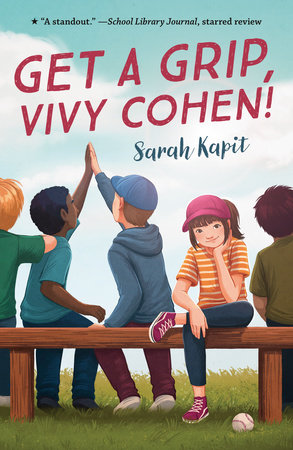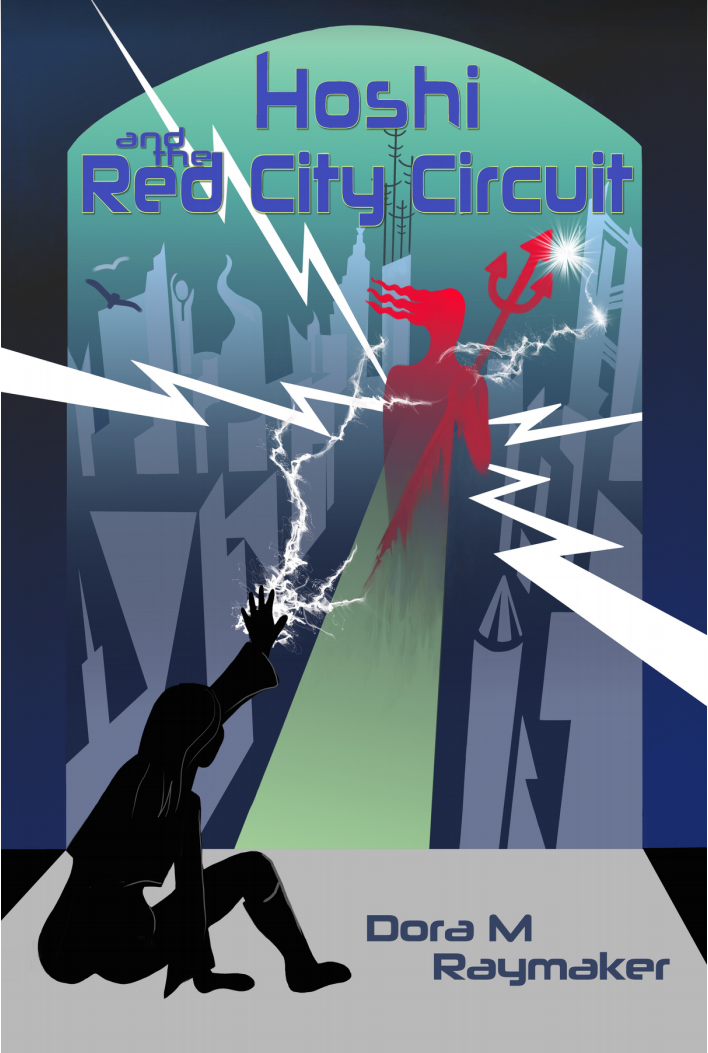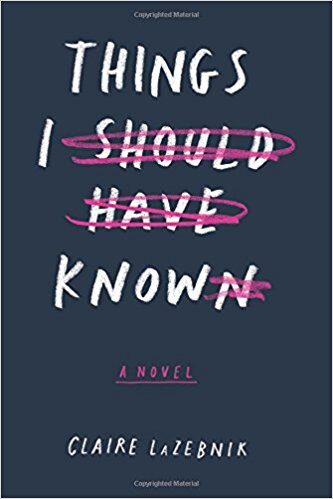The Fire, The Water, and Maudie McGinn is an absolutely wonderful, important book for kids that don’t have a voice and may not be able to identify abuse or know how to talk about it. Fantastic for autistic and allistic readers alike.
Tag: fiction
Autistic author Sarah Kapit is bringing a wide range of authentic autistic characters to her readers.
[image: Brown book cover. Small yellow text at the top reads, “Zachary Goldman Mysteries 2” Next, the title in white all caps text reads, “His Hands Were Quiet.” Next is an image of a yellow triangle with a silhouette of a person bending backwards and being struck in the chest with a bolt of electricity. Large yellow text at the bottom reads, “PD Workman”.] Maxfield Sparrow His Hands Were Quiet By P.D. Workman Content notes: suicide, abuse, murder, house fires, burn injuries, PTSD, Judge Rotenberg Center, ABA This book review gets all the Autistic trigger warnings. It is a gripping thriller/suspense novel that could help people understand autism and Autistic people better, and it is raw and honest about what some of the most vulnerable Autistic people endure. It will be a tense read for everyone and could be especially triggering for many Autistic people, so proceed carefully with this review and…
[image: Illustrated cover of the book Hoshi and the Red City Circuit, by Dora M Raymaker, featuring a person in silhouette sitting on the ground fending off rays of power from a pitchfork-wielding person silhouetted in red.] Kelly Israel Introduction Hoshi and the Red City Circuit, the debut work by Dora Raymaker, is first and foremost an excellent page-turning detective story about private investigator Hoshi Archer’s race to discover who murdered three Operators. Operators are a caste of people with disabilities. They are also the only people who have the ability to run the multi-layered, complex technology of the future. It is next a story about Hoshi herself and the many friends, allies, acquaintances, enemies, and lovers she has known and cared for on her way to becoming the person that she is. Hoshi is also a story that grapples with the intellectual and developmental disability (I/DD) community’s ghosts and…
Elizabeth Bartmess elizabethbartmess.com Book Cover via GoodReads.com [image: Cover of the book The State of Grace: A medium-green background covered with rows of lighter green happy face emojis tilted sideways, except one pink sad face emoji on the lower right. Large white text in an all-caps informal font reads: “The State of Grace” Smaller text in white script reads, “Rachael Lucas” Smaller white all-caps informal text in the upper right reads, “Sometimes fitting in means standing out.”] The State of Grace is a young adult novel narrated by Grace, a fifteen-year-old high school student who deals with common teenage issues like dating, friendships, family conflict, and birthday parties, while also being autistic in a world not designed for autistic people. Grace is a well-rounded and sympathetic character. She has various interests (horses, wildlife, Doctor Who, My Little Ponies), rides and cares for a horse, has friendships and complex relationships with…
Elizabeth Bartmess elizabethbartmess.com This is a three-part series. Part I explores autistic interiority and neurology. Part II explores Diversity in Autistic Characteristics and Demographics. In Part I of this series, I talked about how good representation of autistic characters shows interiority—characters’ inner experiences and reasons for doing things—and how various aspects of autistic neurology affect our experiences, particularly sensory differences, language and speech differences, social skills and abilities, and our ability to strongly enjoy specific interests. I also briefly mentioned executive function, the usefulness of routines and structures, motor difficulties, and a few other common differences, plus some common co-conditions, and discussed how having these differences, and having to interact with others surrounding them, results in our developing skills and coming to new situations with particular expectations for what will happen. In Part II, I talked about variation among autistic people: we each have a particular constellation of neurological characteristics…
Elizabeth Bartmess elizabethbartmess.com This is a three-part series. Part I explores autistic interiority and neurology. Part III explores Setting, Plot, and Character Growth. In Part I, I talked about how neurological differences affect autistic people’s internal experiences and strategies, and how we change over time as a result. Today, I’ll talk about variation in autistic characteristics, in our and others’ relationship to our diagnosis (or lack of it), and variation in demographics, as well as how others’ perceptions of us influence how they treat us, and how we change in response. On Friday, I’ll bring everything together and add some thoughts and links to advice on writing autistic characters, along with a list of some common aspects of autistic experience that are underrepresented in fiction, plus a list of all the books and short stories I’ve mentioned. Even though autistic people have many things in common, we also vary a…
Elizabeth Bartmess elizabethbartmess.com This is a three-part series. Part II explores Diversity in Autistic Characteristics and Demographics. Part III explores Setting, Plot, and Character Growth. “A lot of writers and actors seem to be able to get their heads around what autism basically is, in terms of language, sensory, and social communication difficulties. But then it’s as if they don’t know, or can’t extrapolate to, the full range of experiences that autistic people actually live. That things have happened to us, and things have happened in certain ways for us all our lives, and those things have had consequences for who we become and who we are….[T]he autistic characters [readers and viewers] are used to seeing have no depth of experience. They are people without history.” —Chavisory, at Chavisory’s Notebook This series is about what autistic characters look like when they’re written well, when they have the depth of experience…
Kate Ryan [image: Cover of the book “Things I Should Have Known” by Claire LaZebnik: A dark blue background with “Things I should Have Known and the author’s name in all-caps, handwritten text. Parts of the title are scribbled out in pink, so the title reads, “Things I Know.”] When I scanned the inside cover of Claire LaZebenik’s novel Things I Should Have Known, I knew that I was going to read this book. Not because it sounded particularly interesting, but because one of the main characters was autistic, and that always intrigues me because I am autistic myself. I opened the book on a sunny Saturday afternoon—with trepidation, because 99% of the time, autism (and other disabilities) in fiction are portrayed terribly and then I want to retch at the end. Young adult books, which is this book’s category, are particularly liable to being not just ignorant about disability, but…
Maxfield Sparrow unstrangemind.com A mother’s worst nightmare: That’s what Anna thinks she might be facing at the beginning of Donna Levin’s spellbinding novel There’s More Than One Way Home. It’s 2004 and Anna has accompanied her Autistic son, Jack, as a class chaperone on a field trip to Minotaur Island near San Francisco. When four children—Jack among them—turn up missing, Anna fears the worst. Everyone pulls together to comb the island, and the boys are found. One is dead after all, but to Anna’s guilty relief, it is not her Jack. Thus begins a mother’s second worst nightmare, as Jack is accused of murder. The story unfolds from there: Jack’s loving but authoritarian father’s hands are tied with respect to the case, since he is the district attorney and thus has a conflict of interest. Free-spirited Doctor Valentine helps keep Jack out of the crushing institutionalization of the combined penal and psychiatric…




